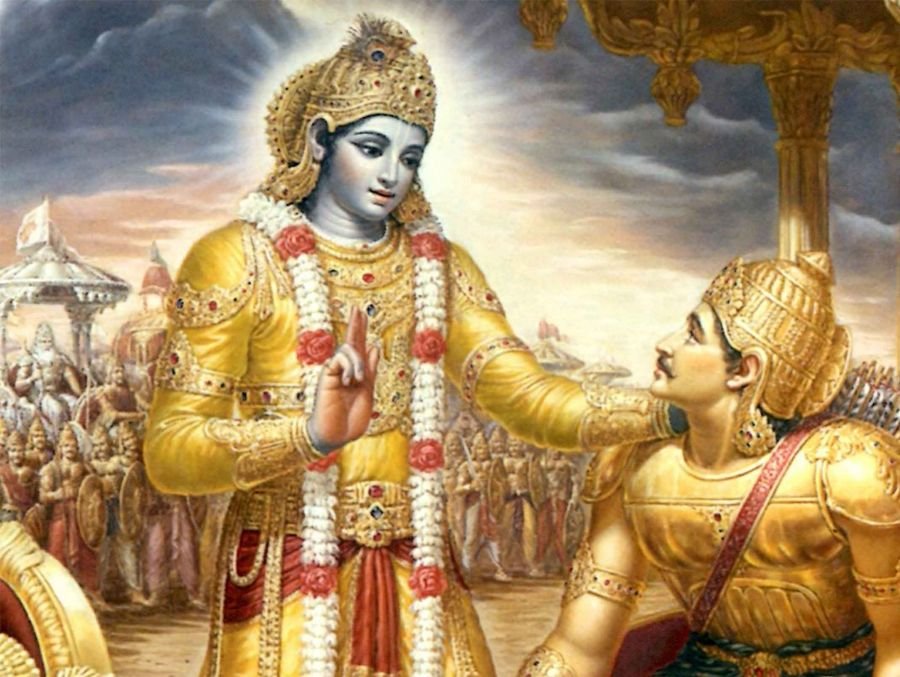(Image Courtesy Mahanidhiswami)
Penance Is Composed Of Three Parts Tapas from Vangmaya, Manasika, and Sharirika
श्रद्धया परया तप्तं तपस्तत्त्रिविधं नरै: |
अफलाकाङ्क्षिभिर्युक्तै: सात्त्विकं परिचक्षते || 17.17||
śhraddhayā parayā taptaṁ tapas tat tri-vidhaṁ naraiḥ
aphalākāṅkṣhibhir yuktaiḥ sāttvikaṁ parichakṣhate|| 17.17||
Shloka Translation
BG – Ch. 17- Ver. 17:
This three-fold penance, carried out by well-balanced individuals with unwavering faith and without hope of reward, is known as sattvic.
Explanation
The features of the austerities of the body, speech, and intellect as they are carried out in the way of goodness are presently mentioned by Shree Krishna. When monetary gain is expected in exchange for practicing austerity, according to him, it loses its sacredness. It has to be done without attachment to rewards and with selflessness. Furthermore, we should not stop practicing austerity out of laziness or inconvenience but rather maintain our trust in its significance regardless of success or failure.
Verse & what we can learn
There are three components to penance. Sharirika tapas, vangmaya tapas, and manasika tapas are the three categories of tapas. To channel and save our energy in the direction of a purpose or goal, whether it is material or spiritual, we utilize tapas. Now Shri Krishna explains three different tapas and how to use them to gauge the depth of our faith. He begins by outlining the circumstances that demonstrate penance to be sattvic.
Since self-realization is the highest objective that can be pursued, sattvic tapas is special in that regard. It is not done to obtain wealth or to develop one’s physical or mental abilities. Additionally, it is carried out with the highest faith in the claims made by the scriptures. In contrast to the other two shlokas that discussed the other two sorts of penance, Shri Krishna employs the word naraha, or human, in this shloka. He makes the implication that only people are able to repent without looking for material gain.
Who is able to carry out this sattvic penance, the greatest level of penance? It is someone who possesses yukta, who has successfully combined their brain and mentality, and who can maintain equilibrium in both success and defeat. Only such a person is able to combine the three components of penance—physical, mental, and speech—also known as the three folds in the shloka. The tapas loses its sattvic qualities even if just one of these is absent. Since it is most difficult to control the mind, mental penance is the most difficult of the three.
To acquire knowledge and to implement that knowledge in life one needs to be mentally and physically active and healthy and for that daily meditation is a great tool.
There are various types of meditation like Buddhist meditation, heartfulness meditation, mindfulness meditation, meditation for stress, and each meditation benefits are countless. There is also numerous meditation techniques for beginners which help in practicing daily meditation so go ahead and start your journey towards a peaceful and balanced life.
In the next shloka Shri Krishna tells about austerity performed in the mode of passion.
Let’s learn to live with “The Gita” via Meditation Affinity…
